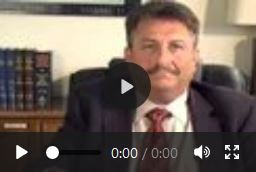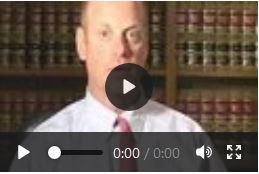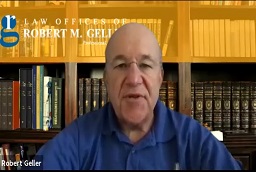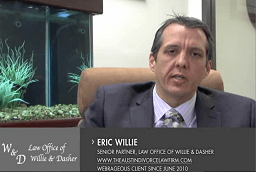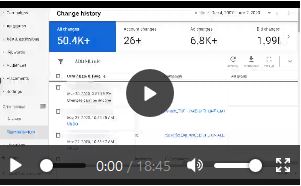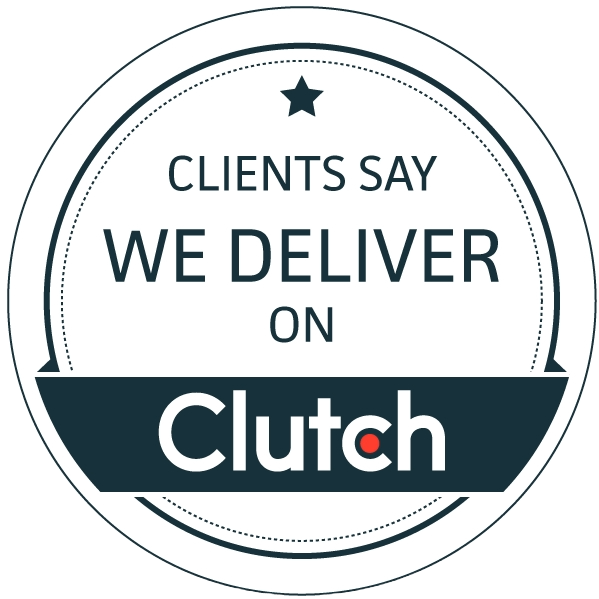Hi, this is David with webrageous. I’ve been managing Google Ads for real estate investors since March 31, 2022, which has been quite a while now. In fact, I’ve been managing Google Ads for over 20 years. I’m making this video not just for my current clients who are real estate investors but also for prospective clients. Today, I want to discuss what is working for my clients in 2025.

(Peggy und Marco Lachmann-Anke / pixabay)
I’ve switched many clients to pre-foreclosure campaigns, and that strategy has been working remarkably well. Towards the end of 2024 and the beginning of 2025, I encountered some challenges. Clients began to express dissatisfaction with results from traditional campaigns targeting long-used keywords such as “sell your home quickly” or “sell your home urgently.” Honestly, I lost a few clients during that time.
Faced with the need to adapt, I had to brainstorm and reevaluate my approach. Switching clients to pre-foreclosure campaigns has proven to be a successful adjustment. Currently, I have dozens of campaigns dedicated to pre-foreclosure.
Interestingly, most of my competitors have little to no presence in this space. They might have one or two keywords related to pre-foreclosure, or in some cases, none at all. What sets webrageous apart is that we’ve built 300 campaigns specifically for real estate investors.
This is an impressive feat—if you were to call ten of my competitors and ask for hundreds of campaigns and 10,000 keywords tailored for real estate investors, you’d likely get blank stares. Many of them manage only one, two, or maybe three campaigns, which falls far short.
I want to highlight some insights from my diverse range of real estate investor clients.
For example, one of my clients, Charlie, has achieved a good cost per lead across multiple campaigns, most of which are not pre-foreclosure-related. Even in 2025, he continues to be satisfied with the results.
What amazes me is how individualized success is across my clients. For bankruptcy attorney clients, it’s relatively straightforward: I deploy five or ten campaigns, and a majority tend to work across the board. However, the approach for real estate investors is far more nuanced. For instance, Charlie invests $15,000 monthly into Google Ads, and the outcomes have been excellent. The cost per lead ranges from $100 to $140, and some campaigns even see leads costing under $100.
I’m particularly focused on striking the right balance between low-cost leads and high lead quality—a crucial factor for real estate investors. Unfortunately, as many in the industry know, bad leads can be quite common.
While it’s tempting to sugarcoat the ups and downs of real estate investment, I believe in honesty. It’s important to stick with it for a few months and ride out the fluctuations. Some months are phenomenal—you might spend two to three thousand dollars on ads, secure one or two deals per month, and reap $30,000 to $40,000 in equity and $1,000 to $1,500 in monthly cash flow. But dry spells, lasting one to three months, are inevitable.

Need Google Ads Management Help?
Free Google Ads account review for
qualified clients
Almost 20 years experience
The key is preparation. For instance, if you land a $100,000 windfall, set aside $30,000 to $50,000 in savings to help weather those lean periods. This foresight can make all the difference.
Returning to Charlie—he’s doing exceptionally well.
Now, let’s examine another client. This particular client focuses exclusively on pre-foreclosure. In late 2024, we initially tried a mix of pre-foreclosure and other campaigns, but the results were mixed, and the client expressed dissatisfaction. After switching exclusively to pre-foreclosure landing pages paired with corresponding keywords, performance improved significantly. While most competitors lack any pre-foreclosure landing pages, webrageous boasts several—over three or four dedicated pages, resulting in stellar outcomes.
For instance, in the past 30 days (March and April 2025), some campaigns have seen leads at $66 and $59 each, with a few more costly leads at $237. Despite these occasional higher costs, this client is thrilled with the results—they’re essentially printing money at this point.
Lastly, let’s look at Steven, who has been with me for two or three years now. One of his campaigns has achieved 12 leads at $66 per lead, which is fantastic. This underscores why I run multiple campaigns—to identify that sweet spot for cost per lead. Often, campaigns need time to gain traction before showing their true potential.
However, client collaboration remains an ongoing challenge. When clients disappear without feedback, skip support calls, or fail to book consultations at booknow.webrageous.com, it leaves me unsure of how to assist them effectively. This communication and collaboration are absolutely essential for a successful partnership.
Let’s take a look. This is the exact match foreclosure campaign for one client—six leads at $39 each. This is why I run multiple campaigns.
Sometimes, you just get really lucky. I tend to focus on exact match and phrase match campaigns because, generally, they perform a little better.
If you’re planning to run broad match campaigns, you need a stellar negative keyword list. That’s why I’ve compiled over 5,000 negative keywords, a feature you typically won’t find with most of my competitors.
For instance, I have a broad match foreclosure campaign for a client with four leads at $35.89 each. It’s working fantastically! To ensure accuracy, I filter everything through my lead tracking system.
Here’s what it shows:
- 72 leads marked as quotable.
- 48 leads are pending.
- 237 leads are not quotable.
- 176 leads are not yet graded.
This client needs to go in and evaluate more of their leads. For each lead, you’ll receive an email prompting you to determine: *Is it quotable? Is it a good lead?* This feedback tells Google to either send more leads like that (if yes) or avoid similar leads (if no).
For leads where there’s no response from the prospect, you typically rate it a “no.” However, if you connect with a lead who has equity or a low interest rate, you mark it as quotable with a “yes.” This process signals Google to send more high-quality leads. Filling this out improves lead quality by an impressive 19%.
Now, let me show you how reports work.
As I mentioned, what works for one client might not work for another. By analyzing data across all my real estate investor clients, I assess trends: what works, what doesn’t, and the ratio of good to bad leads. I also tailor strategies on a client-by-client basis.
For example, in one foreclosure campaign, we achieved 11 good leads to 5 bad leads—a phenomenal 2:1 good-to-bad ratio! This is a campaign worth maximizing. It’s essentially raining money. On the other hand, a regular foreclosure campaign had 1 good lead for every 2.2 bad leads. While not terrible, it’s not as outstanding.
In the case of foreclosure exact match, we hit 4 good leads to 3 bad leads. That’s another campaign worth maxing out. However, remember: I can’t optimize campaigns effectively unless you’re grading your leads consistently.
On the first of every month, I perform a deep dive to reshuffle campaigns. If clients are dissatisfied, I introduce new campaigns, integrate them, and turn off underperforming ones—those with high costs per lead or a low ratio of quotable to non-quotable leads.
For my existing clients, it’s crucial to share your feedback during the last week of the month. Even a short email or note once or twice a month makes a big difference. You can also book a time with me at **booknow.webrageous.com**. For prospective clients running Google Ads for real estate investors, let’s connect. I’ll provide a complimentary analysis of your Google Ads account, highlighting what’s working, what’s not, and what I would adjust.
Now, let’s examine another client, Steven. His conversion rate is 16%, with a good-to-bad lead ratio and other metrics worth noting. Just like before, I can generate detailed reports to identify which campaigns are thriving. Some clients excel with pre-foreclosure leads, while others do better with alternative campaigns.
A key takeaway: *Speed to lead is absolutely essential.* You need to respond to prospects quickly to make campaigns successful.
For some cases, I still need more data to draw meaningful conclusions. For instance, one exact match campaign delivered 1 good lead to 3 bad leads—an average performance. Meanwhile, another foreclosure campaign produced 1 good lead to 2 bad ones, which is more promising.
One particular client excels in BC2 campaigns, but so many of their leads remain ungraded. Across all clients, logging in to assess leads more thoroughly would significantly help me improve campaign performance.
That way, I can automatically deactivate campaigns with high lead costs or suboptimal ratios. This streamlines success for everyone.
November has been a strong month for one of my clients, producing 20 good leads alongside 28 bad ones—a result that’s above average overall.
When it comes to cash house buyers, the ratio is one good lead to one bad lead, which is fantastic. BC2 campaigns, though not performing as strongly as before, still yield one good lead to two bad leads, which is great nonetheless. Pre-foreclosure campaigns often generate a mix of leads, ranging from homeowners who just lost their property to those who may still have a chance to redeem it.
In many states, once a home is gone, it’s too late—but some states have redemption periods. If the lead involves a homeowner’s association or tax lien, these redemption periods can span months, offering the chance to reclaim the property. However, if the mortgage hasn’t been paid, the house may already be lost. Depending on state laws, you might only have a week or a month to act. It’s crucial to conduct thorough research for leads where the foreclosure sale or sheriff’s sale is imminent—whether it’s an hour or a day away.
Leads acquired well ahead of such sales can sometimes be less urgent. For example, a homeowner might consider other options such as securing another loan, borrowing money from family, selling, renting, or catching up on payments. This process involves building relationships with these individuals, showing genuine intent to help them.
If homeowners sense that you’re truly on their side—unlike others who quickly disengage if the prospect isn’t ready to sell—you can cultivate trust. Staying connected may pay off when they exhaust their options just days before a foreclosure sale. While losing the house might seem inevitable, homeowners often wish to avoid damaging their credit further. If you can take the property under “sub two” financing, you may secure it at a 3% interest rate, gaining $30,000 to $100,000 in equity.
Persistent follow-ups are vital in overcoming obstacles, like when leads become unresponsive or “ghost” you. Leveraging a CRM that sends automatic texts and emails can be a game-changer. It allows for consistent communication until leads explicitly request that you stop. Persistence truly is key.
In cases where leads block your number, you can consider alternate approaches. For instance, having a family member—like your spouse, child, or cousin—reach out using a different number might yield surprising results. Sometimes, minor strategy tweaks can lead to success. It’s also beneficial to talk to your coach, participate in support calls, and maintain open lines of communication with me. Regular updates—whether things are working or not—help improve your campaigns’ effectiveness.
Clients can track keywords and campaign names for each lead via **leads.webrageous.com**. Even if you’re not a webrageous customer, you can pay for access to this lead tracking system. Additionally, I can offer click fraud monitoring to block the IP addresses of individuals repeatedly clicking on your ads. This prevents budget misuse and ensures better campaign performance.
If you’re satisfied with your Google Ads campaigns but looking to improve your conversion rates, I can create a website with 15 diverse landing pages to find the most effective one. Enhanced conversion tracking is integrated into these pages, ensuring optimal performance—even as browser updates restrict cookie usage. When Chrome displays a pop-up asking users to allow cookies, the answer will likely be “no.” Similarly, as apps on iPhones prompt users about tracking, most opt against it. This shift significantly impacts conversion optimization, which relies on these background processes.
Enhanced conversions are crucial as cookie restrictions loom. Without them, campaigns may face hurdles. Follow-ups remain indispensable—some clients secure deals months after initial contact because they maintained regular communication.
Now, let’s discuss landing pages. We can customize pages to include your photo, video, and details such as your bio, phone number, and email address—either on the landing page or the thank-you page. This approach keeps prospects engaged even after form submission.
Some clients prefer listing contact details directly on the landing page; others find this overwhelming. Both options are viable, and I’m here to adapt these elements to fit your preferences. Popular landing pages, like those addressing foreclosure scenarios, are thoroughly tested to determine what works best for you.
Testing isn’t a one-time process—it’s ongoing. I continually create and optimize campaigns, adjusting for market shifts or statistical trends. Results often change, as what worked six months ago may no longer be effective. Location targeting also plays a significant role. Larger areas generally increase success rates, while smaller areas, like single counties, double or triple the likelihood of failure. Expanding targets to entire states or multiple counties enhances results. Metropolitan areas within a 20-mile radius often perform well, whereas rural leads in a 50-mile radius may lag behind.
The key is persistence—keep adapting, refining, and innovating. Communication and collaboration are essential; don’t disappear on me. Regular interaction ensures we make meaningful changes until campaigns perform optimally. Smaller adjustments follow once campaigns stabilize.
For quick questions, email me at **moc.s1764718025uoega1764718025rbew@1764718025divad1764718025**. If you use call tracking tools like CallRail, I can conduct a free review. Even if you’re satisfied with your current account manager, a brief call could reveal opportunities for improvement.
Let me also guide you through backing up your Google Ads account. Mistakes—whether made by Google reps or account managers—can be irreversible. Some reps offer helpful advice; others don’t. As a client, distinguishing good advice from bad can be challenging. Having multiple backups safeguards your campaigns from errors.
Feel free to connect with me at **booknow.webrageous.com**. I look forward to learning more about your account and helping optimize it. Thank you, and have a fantastic day!









